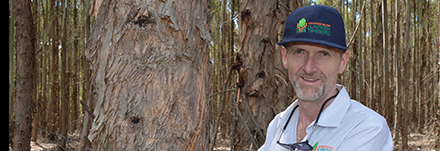On the first anniversary of the Ravine Bushfire which burned 150,000 ha and tragically took two lives on Kangaroo Island, Keith Lamb, Chair of South Australian Forest Products Association (SAFPA), and Managing Director of Kangaroo Island Plantation Timbers (KIPT), has reflected on policies which contribute to fire risk and impair fire control. Source: Timberbiz
“For too long the state and local governments have developed policies and procedures in isolation without understanding the wider impact on fire risk. These policies may have been well-meaning but have overlooked the unintended consequences of exacerbated fire risk,” Mr Lamb said.
“Fire is a natural part of the Australian environment. The Australian bush grows during wet periods and burns during dry periods. These natural cycles of floods and drought have always occurred, and the impact of climate change will exacerbate the risk to our environment and the community, from misguided policies and practices that overlook these important principles.
“Traditional cultural burning was based on a greater understanding of the need for active management of fire in the Australian landscape. Modern policies which restrict farmers, foresters and land managers from actively managing vegetation, to reduce fuel loads and control fire risk, will inevitably contribute to the types of fire events we saw on Kangaroo Island, when in a single afternoon 150,000 ha was burned and two lives were lost.
“At the same time, greater emphasis needs to be made on fighting wildfires through direct attack using ground-based techniques, supported by aerial water-bombers, where appropriate and safe to do so. Volunteers and professional fire fighters deserve our support to do their job. Allowing fire fighters to conduct direct attack techniques on wildfires, before they become widespread and out of control, is essential for preventing large scale losses and harm to the community.
“We have all learned lessons from the Kangaroo Island bushfires of January 2020. Greater awareness is required of the cumulative impact of localised policies and procedures which prevent farmers, foresters, land managers and fire fighters from managing fire risk. This includes essential vegetation control measures, such as fire breaks and setbacks, cool season burns and application of direct fire-fighting techniques where it is safe to do so.”






